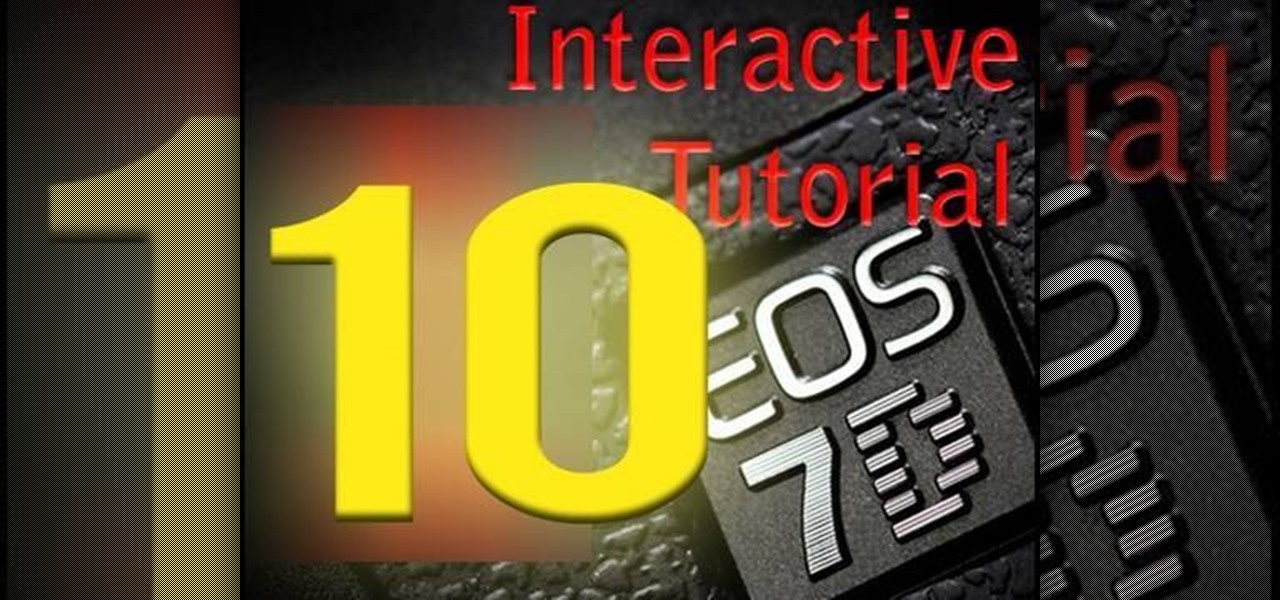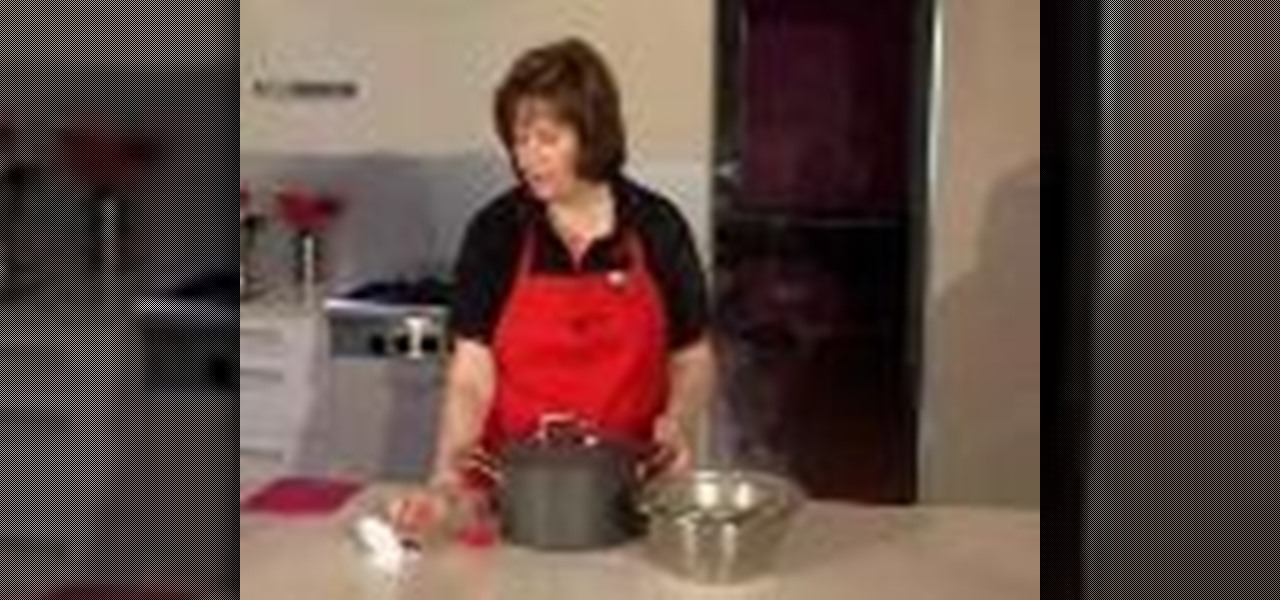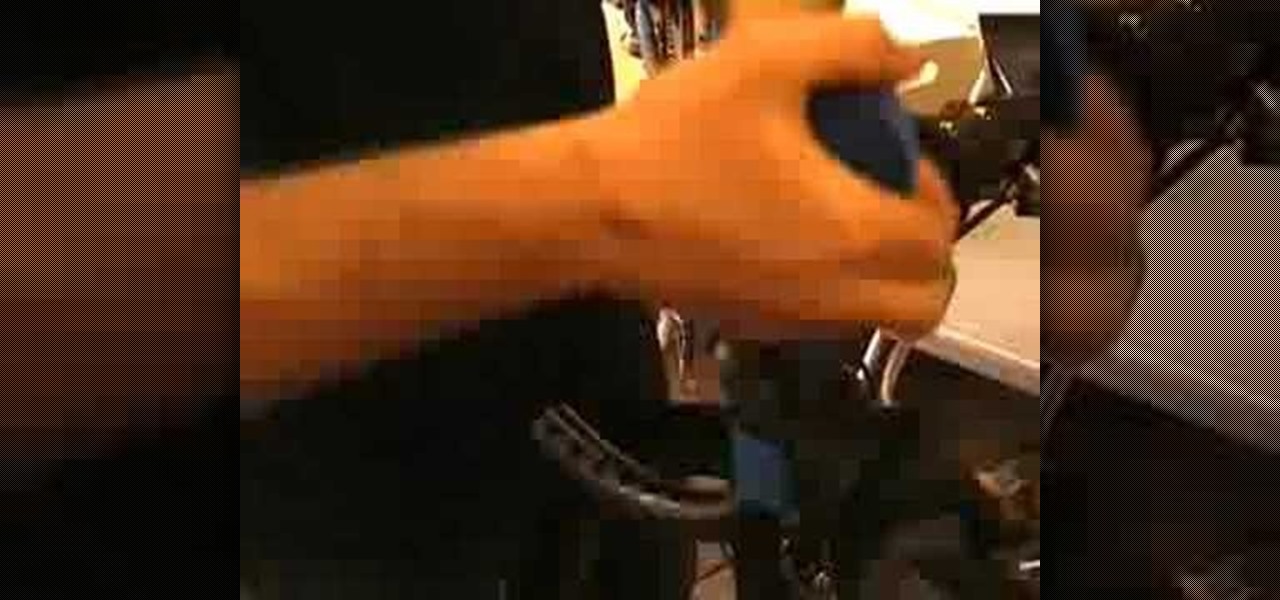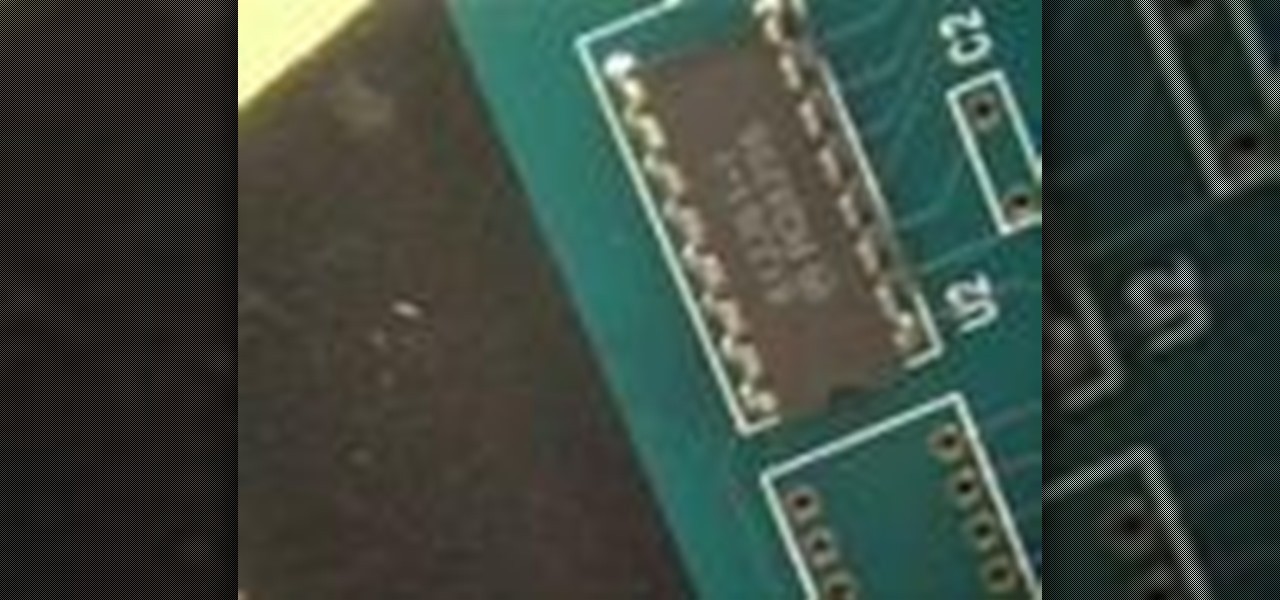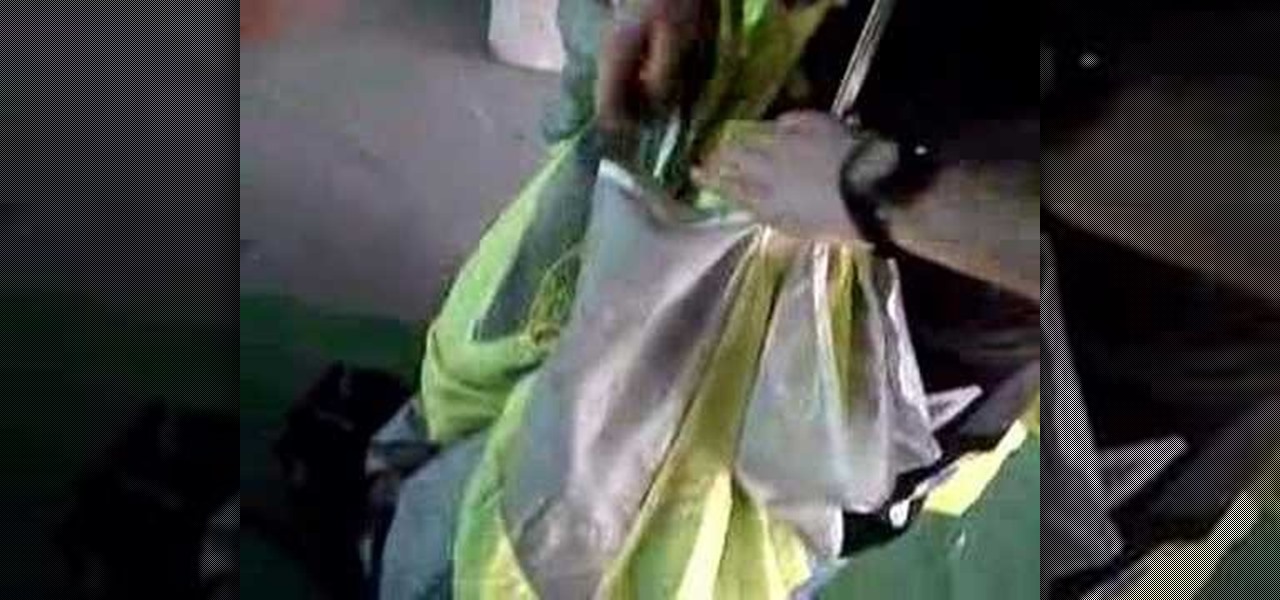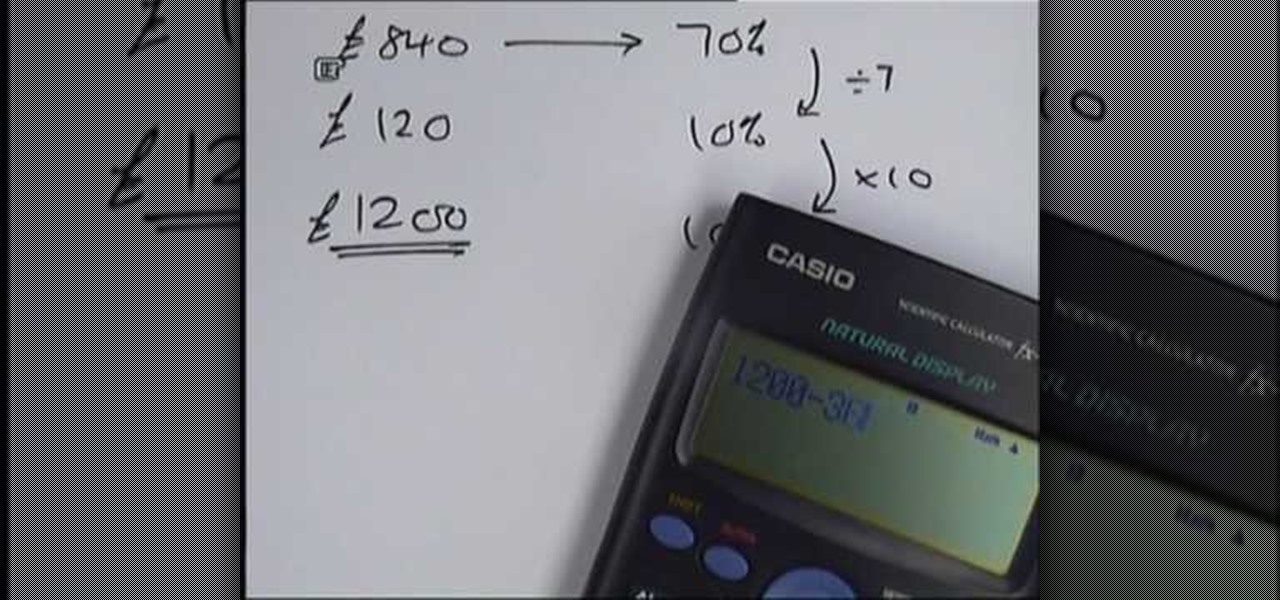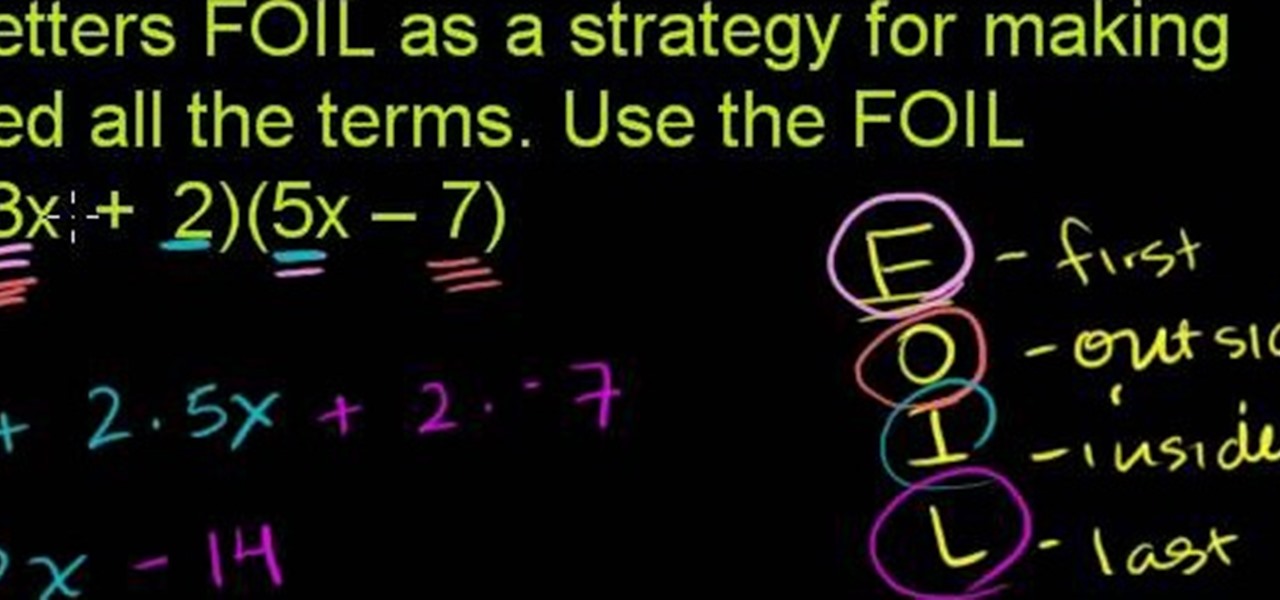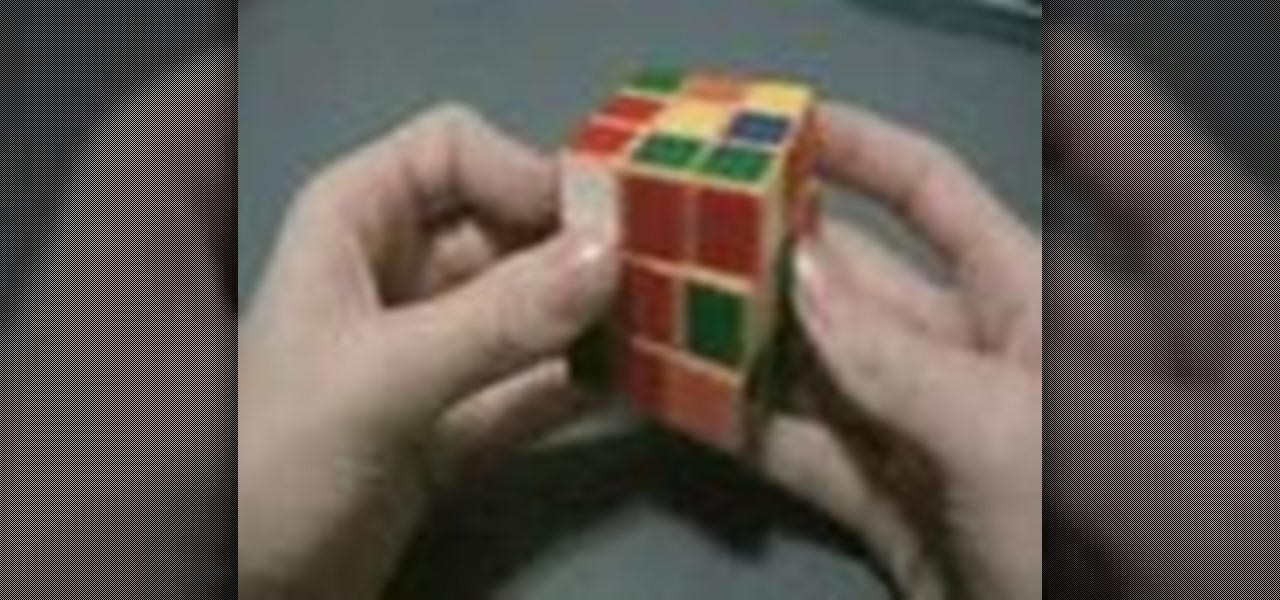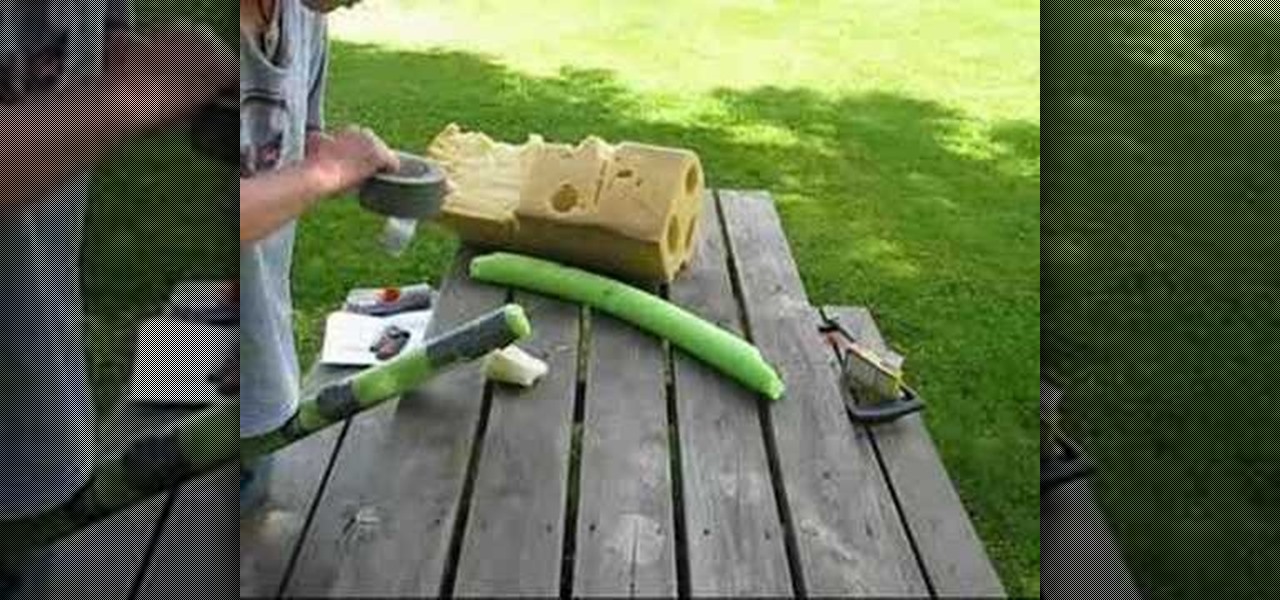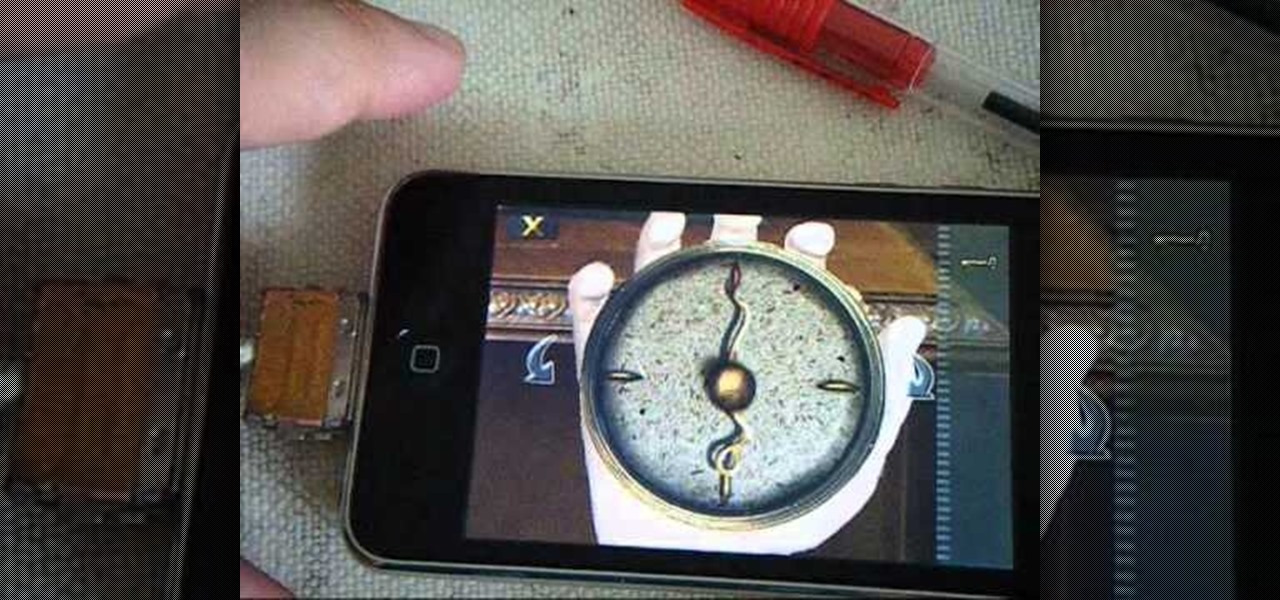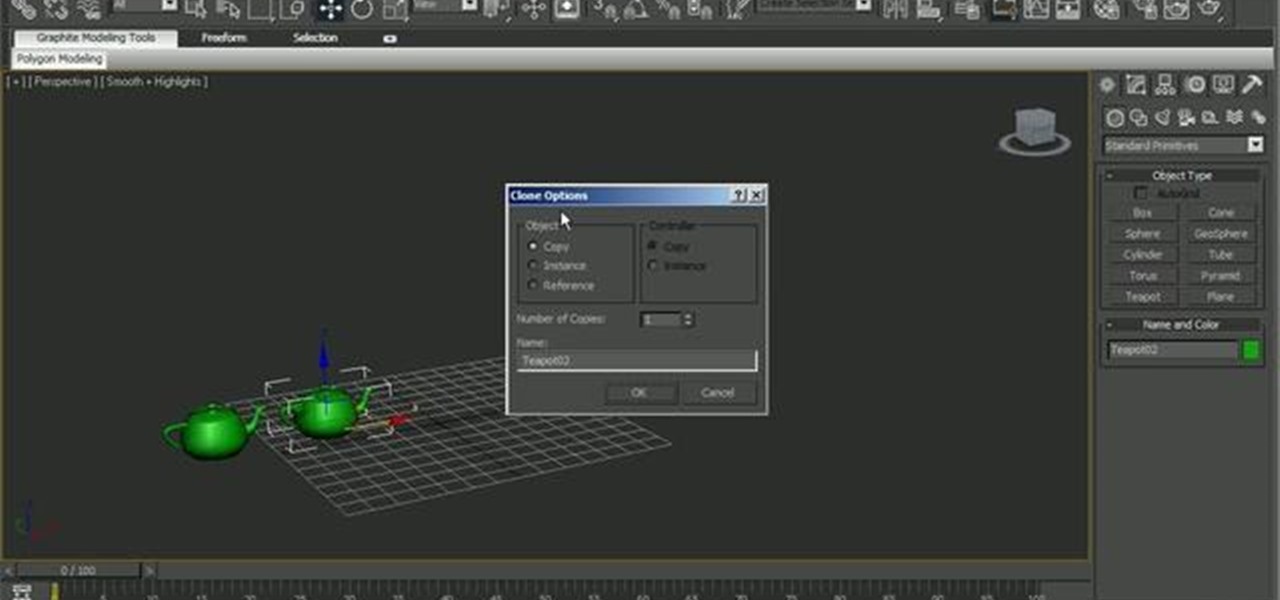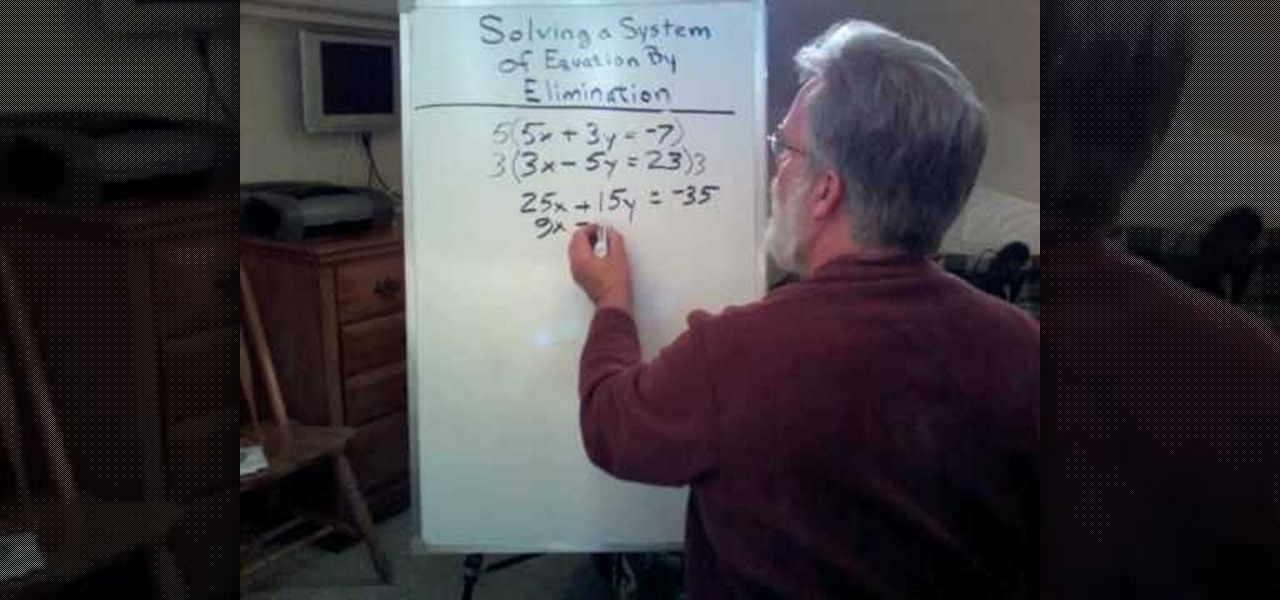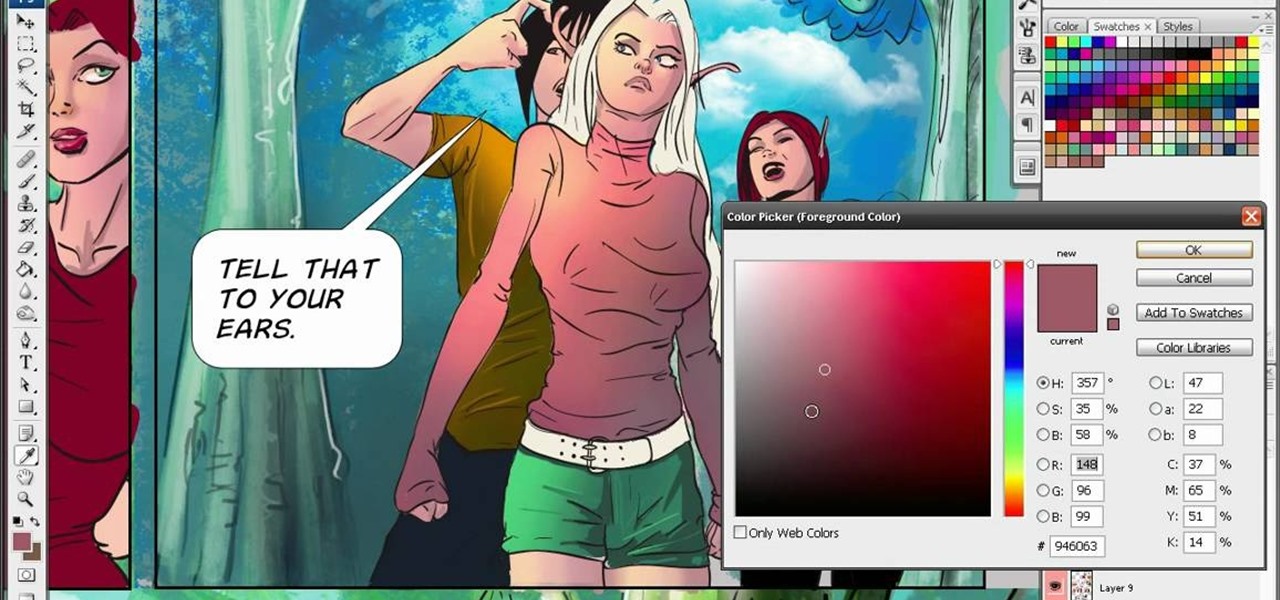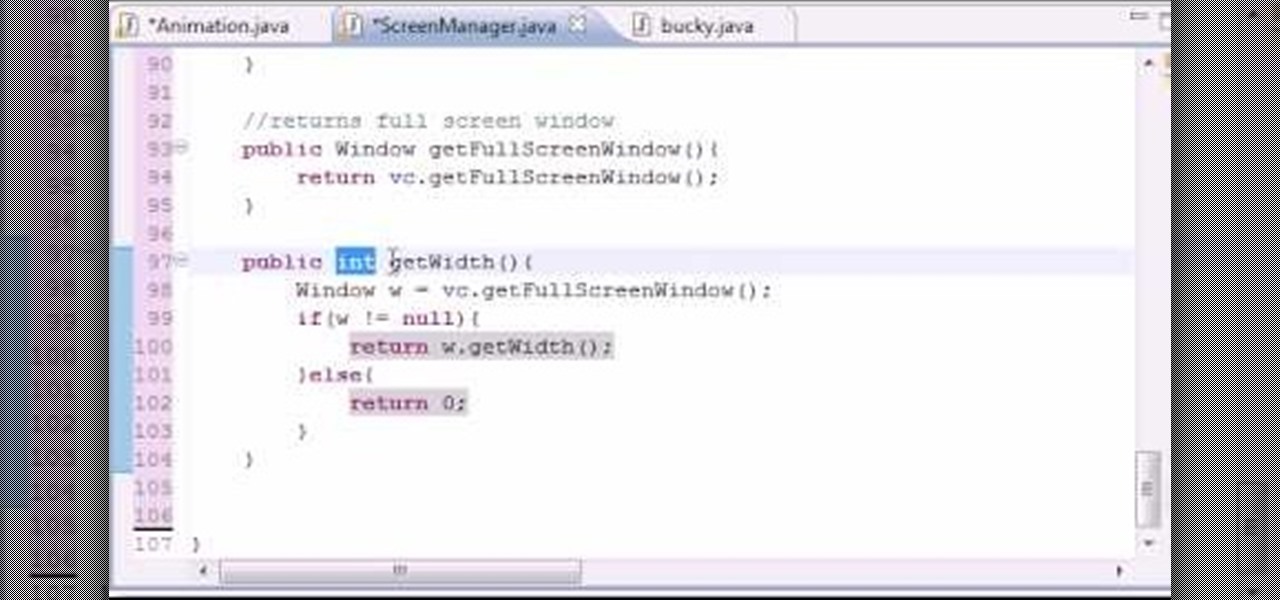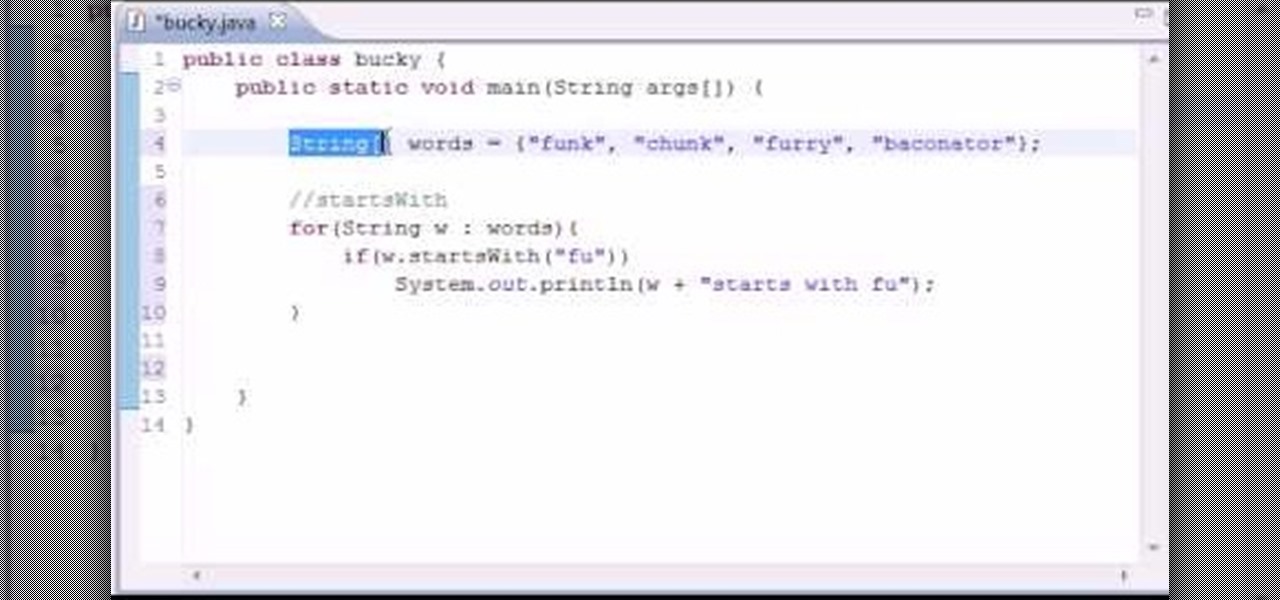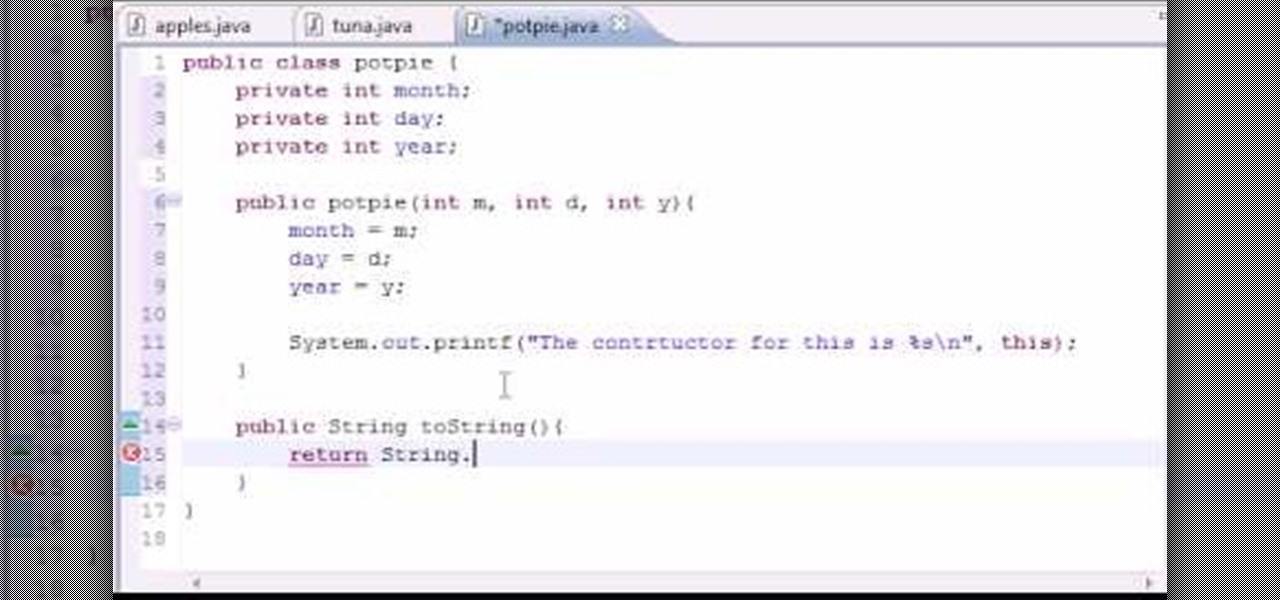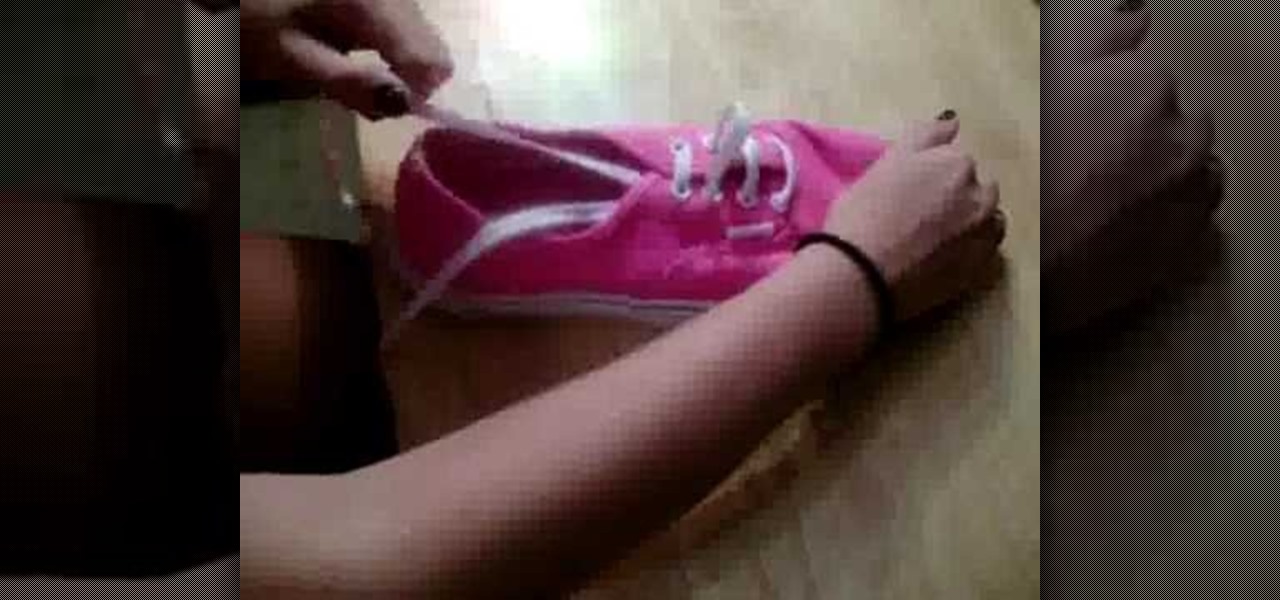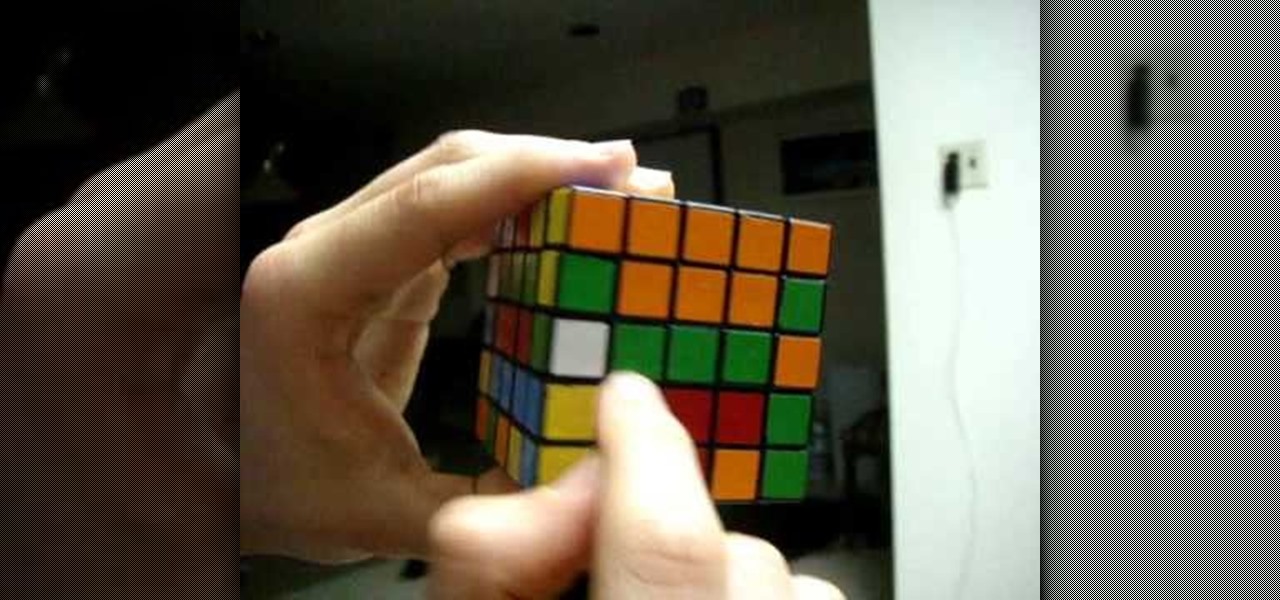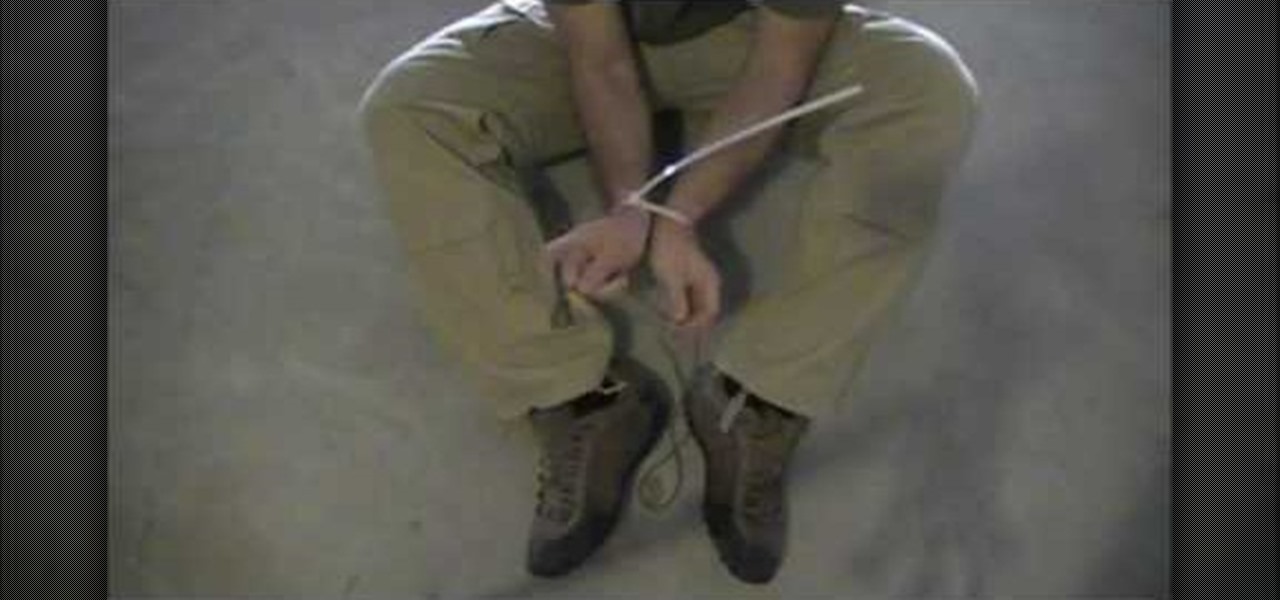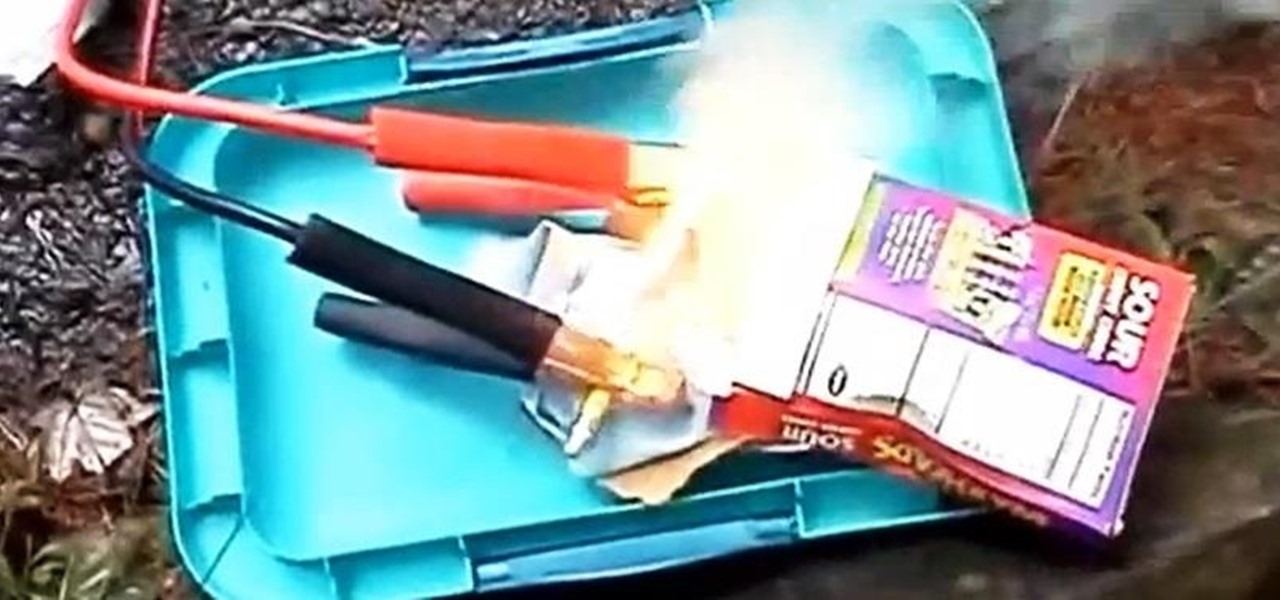
This video will show you some methods to create a fake Loch Ness monster photo. You will need a camera or a camera phone for this project. One method of faking a sea monster picture involves creating a clay model of a head and a neck of a sea monster and holding it underwater. The outline of your hand holding the clay will serve as the body of the monster. Another method which can be used to fake a sea monster can be done using a clothes hanger and holding it underwater. The hook of the hange...
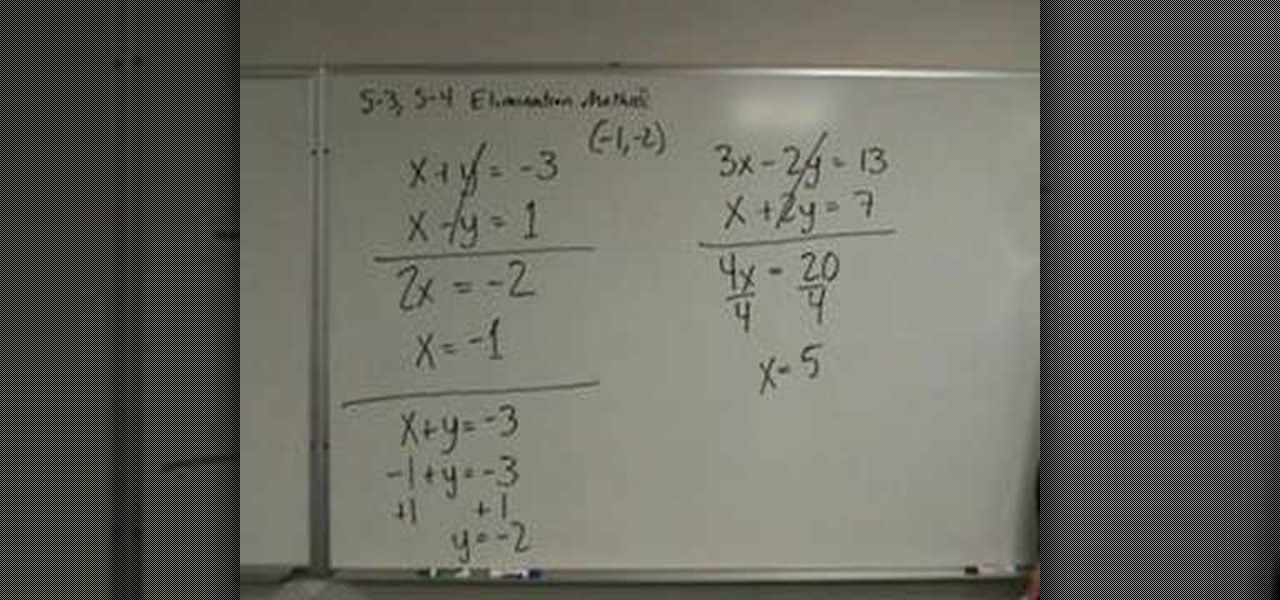
The video shows us how to solve a system of equations with the elimination method. First write the two equations one on top of the other, as it is going to be elimination method and it is recommended to write it in that way. Here the 2 equations are x+y=-3 and x-y=1. In the elimination method we need to add the 2 equations by columns. So adding it column wise we get to have 2x=-2 and solving this we will get the value of x=-1. Then you need to substitute this value of x in any of the two equa...
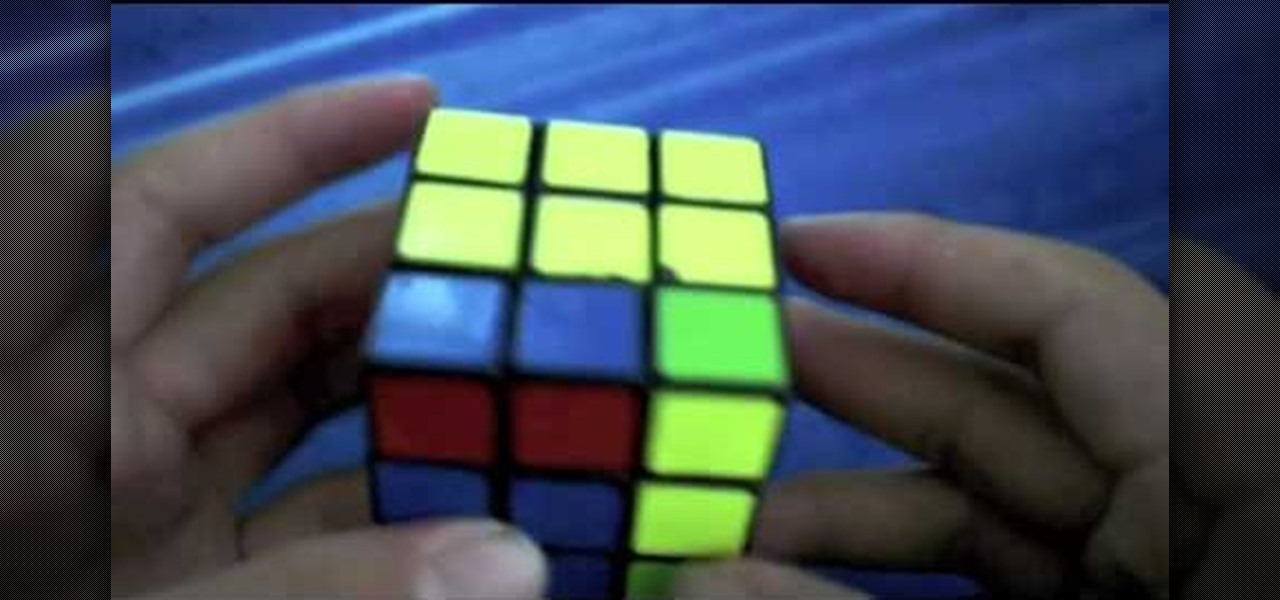
The video shows a unique method of solving a Rubik's cube. The method is called F2LL or 'winter variation'. There is very little information about this method on the internet. It deals with Corner Orientation. The person in the video is a skilled cube handler. There are 27 algorithms and their mirrors in the F2LL method. While you form an F2LL pair, you need to orient the corners at the same time. This method makes cube solving all the more easy.

How to Use the Highest Common Factor method for Factoring
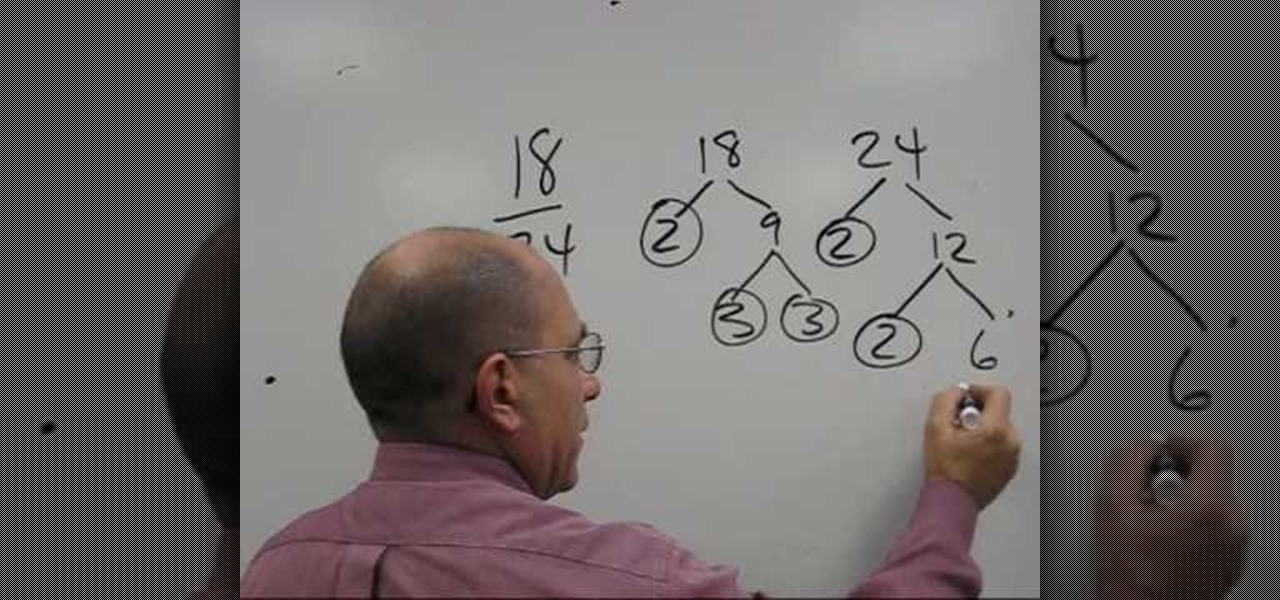
In this math tutorial, you will learn how to reduce fractions using the prime factoring method. The narrator, a math teacher, of the video begins by defining what prime numbers are. This is important to know. When reducing fractions you need to reduce both the numerator and the denominator down to numbers that cannot be reduced by any other numbers but 1 and itself (prime numbers). The method the video teaches is to find the prime factors of both numerator and the denominator to simplify the ...
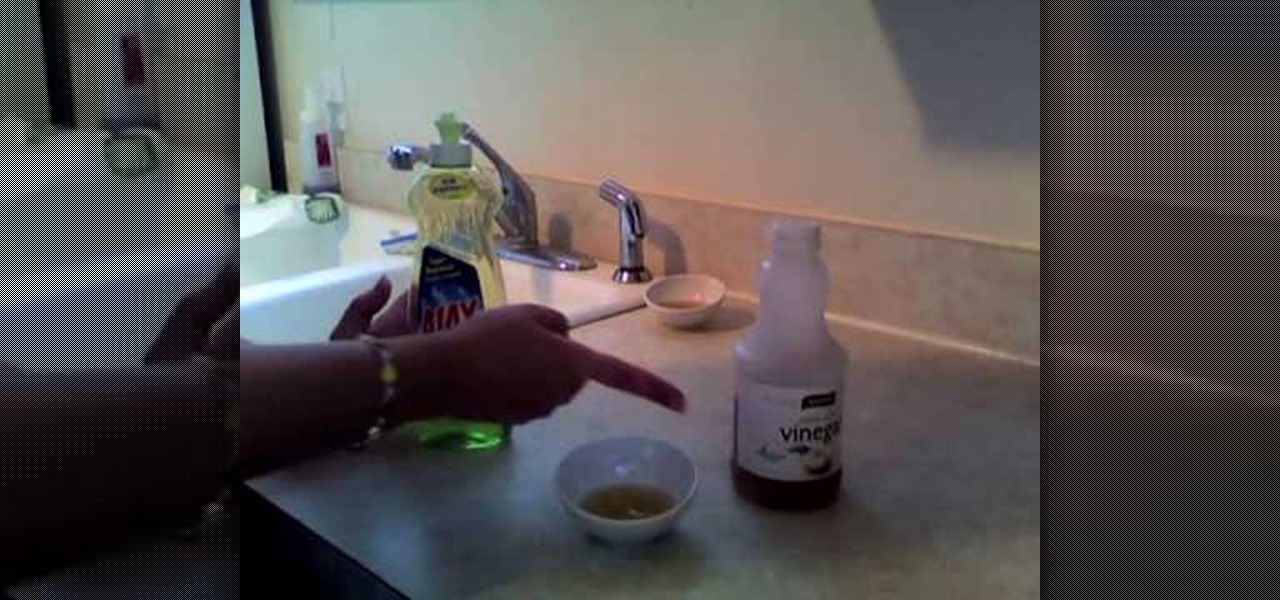
The method explained in this video is a very simple method to get rid of fruit flies. Materials required for this method are:

A video from free math tutoring that teaches you a method of factorization of a complex polynomial. The tutor shown in the video demonstrates how to factorize common functions of a variable by the factor method. This video isn't for advanced learners of mathematics. It is for beginner to intermediate level viewers.

Looking for a cheap stabilization method? Look no further. In this vieo, learn a great (& inexpensive) stabilization method steadicam steadytracker using a cheap tripod with your Canon 7D/5D.

Check out this video cooking tip from The Chef's Toolbox in Australia. Watch this tutorial to learn how to cook rice with the rapid boil method like a chef. Cooking rice is easy with a little know-how, see how to do it right here.

A great way to rack your brain is by trying to solve a puzzle, so grab your puzzle and get solving! If you need a little help, this two-part video tutorial will show you how to solve the classic Rubik's Cube F2L with the Fridrich Method. The 3x3 Rubik's Cube is one of the most baffling puzzles on the market today, so make sure your up to speed on solving it. Watch and learn a few algorithms to get your puzzle solved! Wait, there are no algorithms for the Jessica Fridrich Method when solving t...

Find out a new way to solve the Rubik's Cube made famous by Erno Rubik, master puzzle maker. Try to get the OLL (Orientation of the Last Layer) using a new method that lets you look at the cube and figure out a two algorithm move solution to orienting them correctly. Just watch this video tutorial to see how to solve a Rubik's Cube with the Compound OLL method.

The English or throw method, shown in this how-to video, is a way of purl knitting with the right hand. Yarn is held in right hand, then, by necessity, wrapped around the right needle before pulling the stitch through. Watch this video knitting tutorial and learn how to do the purl stitch by the English or throw method.

There are lots of methods of wrapping bar-tape. This is the top down method and requires no electrician's tape to fasten the end of the tape to the bicycle handlebars. Tke a look at this tutorial and learn how to attach it by the top down method.

This tutorial video will teach you how to shave with the technique of Method shaving. Roberts method shaving relies on organic materials and systematic beard reduction.

Solve the Rubik's Cube with the Fridrich f2l method using tips from this how-to video. Start by making a cross on one side of your Rubik's Cube. After that, flip over your Rubik's Cube and watch the video to learn exactly what to do next--do you think you're going to read it here? Eventually, you'll get the Fridrich f2l method down, it's a promise!

Screencast video tutorial of the setup and installation of Joomla! content management system using the WAMP stack method and the JumpBox method.

If you aren't as advanced as you want to be, then use this method to solve a 2x2 Eastsheen Cube, because the Rubik's isn't really that good. If you are advanced, then watch the second vide for the über-complex method, the Guimond Method.

In this soldering tip video brought to you by BEST, Inc. Norman Mier certified master instructor for Soldering Skills demonstrates multi-plated through-hole tweezer method, also known as SOIC tweezer method.

A brief video that illustrates parachute packing using the 'psycho method'. Part 1 of 2 shows the steps of; Sorting the 9 cells, slider, stabelisers, wrapping of the tail, flipping the pack job on its back, untwisting d-bag and cocking the pilot chute. Part 2 illustrates the final stages of the pack job called the 'psycho method'. These steps include; Making sure the pilot chute is cocked, roling the left 4 cells left, the other 4 cells right,the9th cell position, slider adjusting or 'pouting...

We know the method for answering the question "What is the x percent of y" but, what about the answer to the following question "The x percent discounted price of an article is y. Find the original price." This is a reverse percentage problem that can be solved using the method shown in this video. This video contains three reverse percentage problems. The first two problems are essentially of the same type as explained above. A simple and easy to understand method of finding the original pri...

Looking for a primer on how to solve polynomials via the FOIL approach in basic algebra? From Ramanujan to calculus co-creator Gottfried Leibniz, many of the world's best and brightest mathematical minds have belonged to autodidacts. And, thanks to the Internet, it's easier than ever to follow in their footsteps (or just finish your homework or study for that next big test). With this installment from Internet pedagogical superstar Salman Khan's series of free math tutorials, you'll learn how...

This how-to video explains in detail about an alternate mental subtraction method.

Need a little help solving the first part of the Rubik's Cube puzzle? The F2L (First Two Layers) could be tricky, and could get you back to square one if you don't know what you are doing, but don't worry, you'll be able to solve that Cube in no time.

Quilting! Is there anything better!? Well, no, but one thing easier is the quilt as you go method. This video will show you what to do and how to do it. You'll want to have some baton, backing, thread, scissors and of course lots of pieces of fabric. The fabric doesn't need to be the same color or style and in fact, the more different the fabric the crazier your quilt will be. Check it out! Get quilting, and learn the quilt as you go method today!

You've probably seen tutorials on YouTube before on how to achieve Kim Kardashian curls, or Victoria's Secret waves, or the hair look of the fashionable deviants on "Pretty Little Liars," but why go through so many tutorials when they're all really the same thing?

Turkey is the focal point and A-list star of your Thanksgiving table, so it only makes sense to make the bird as delicious as possible, right? Eschew the tired method of roasting and basting your turkey in the oven for hours on end and try out a new method of cooking it this year: deep frying.

This tutorial shows you a very basic method to create an effective boffer sword using PVC pipe, a foam noodle, duct tape and some open-cell foam for a stabbing-safe tip. You're also shown a good method for constructing the hilt. This is a great tutorial for anyone looking to make a foam sword for their favorite boffer larp!

While the easiest way to get out of the room in Antrim Escape is the 'Emma' exit, there is another secret method to escape called 'Ethel.' This tutorial shows you how to use the Ethel method to solve Antrim Escape.

Cardio intervals, circuit training, plate exercises...when it comes to fitness, it seems like there's always a fancy name for what are essentially really easy yet effective strength building, fat burning, and toning exercises.

See how to create arrays of objects in 3D Studio Max. While there are a variety of methods for generating object arrays, this clip looks at two of the faster methods for creating 1D, 2D & 3D arrays. Whether you're new to Autodesk's popular modeling software or a seasoned 3D artist just looking to better acquaint yourself with the application, you're sure to be well served by this video tutorial. For more information, take a look!

\When both equations in a linear system are in the form Ax + By = C, you can solve the system using elimination. How is this method different from substitution? The idea behind the elimination method is to create a new equation from a combination of the original equations in the system. The new equation is formed by adding or subtracting the originals. When we combine two true equations, the sum or difference must also be true.

In this tutorial, learn a new technique that will help you color comics much faster while still allowing for a lot of color variation. This method saves a lot of time and allows you to get your art out to the masses faster.

Want to program your own Java games and applications but don't know beans about object-oriented programming? Never you fear. This free video tutorial from TheNewBoston will have you coding your own Java apps in no time flat. Specifically, this lesson discusses how to create and update restore screen methods when programming in Java. For more information, including detailed, step-by-step instructions, watch this helpful programmer's guide.

Want to program your own Java games and applications but don't know beans about object-oriented programming? Never you fear. This free video tutorial from TheNewBoston will have you coding your own Java apps in no time flat. Specifically, this lesson discusses how to use common string methods when writing code in the Java programming language. For more information, including detailed, step-by-step instructions, watch this helpful programmer's guide.

Want to program your own Java games and applications but don't know beans about object-oriented programming? Never you fear. This free video tutorial from TheNewBostonian will have you coding your own Java apps in no time flat. Specifically, this lesson discusses how to use implement and use Java's toString() method. For more information, including detailed, step-by-step instructions, watch this helpful programmer's guide.

Want to write Java games and applications but don't know beans about object-oriented programming? Never you fear. This free video tutorial from TheNewBoston will help you on your merry way to accomplishing just that. Specifically, this lesson will demonstrate how to work with polymorphism when coding in Java. For more information, including detailed, step-by-step instructions, watch this programmer's guide.

Ever wonder what is the correct way to lace and tie your Vans shoes? There are probably a couple of different methods to do so and this video shows you one of those methods step by step. It's quick, easy, and will have you looking good in your shoes in no time. Enjoy!

This video shows an explanation for an Advanced Edge Pairing method for the 5x5x5 Cube. The method used is as follows. First, you should match up edges on the middle layers (in the build ring) to form complete "tredges," or triple edge pieces. Then replace and store these tredges on the Up and Down faces of the cube. This method CAN be applied to any size big cube!

You've been captured, and your wrists are bound together with zip ties. Fortunately you prepared for this situation, and you have a bit of 550 cord in your shoe. Using the cord, you can escape the zip ties using the friction saw method. This tutorial from the folks at ITS Tactical will teach you how.

What happens when you need to build a fire, but you forgot your matches and lighter? What if you don't know the fire-plow method, the bow and drill method, or even the flint and steel method (not that you would have flint, because you forgot your lighter)?









